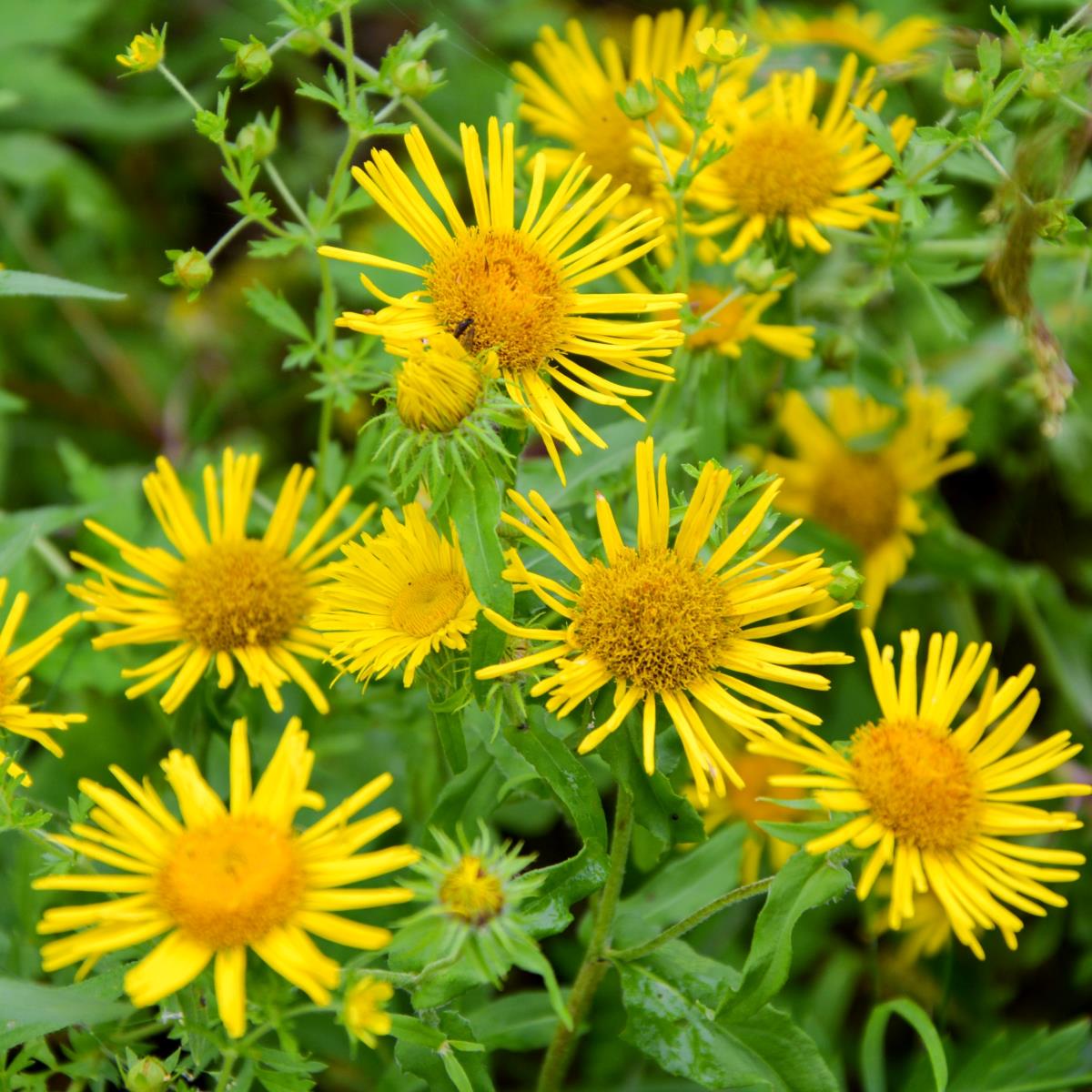
Dharaseeds
Elecampane Inula helenium
Estimated delivery between February 04 and February 07.
Elecampane (Inula helenium) is a tall, hardy perennial plant that has been used for centuries in herbal medicine. Known for its distinctive yellow flowers and large, broad leaves, elecampane is not only admired for its ornamental value but also revered for its potent medicinal properties. The roots, in particular, are valued for their ability to support respiratory health, improve digestion, and offer anti-inflammatory benefits. Growing elecampane in your garden allows you to harness the power of this ancient herb for both health and aesthetic purposes.
Key Benefits
- Respiratory Health: Known for its ability to soothe coughs, bronchitis, and other respiratory issues, elecampane is often used to support lung health.
- Digestive Aid: The root has been traditionally used to treat digestive issues, such as indigestion, bloating, and sluggish digestion.
- Anti-inflammatory Properties: Elecampane contains compounds that have anti-inflammatory effects, helping to reduce inflammation in the body.
- Antioxidant and Antibacterial: The root has antioxidant properties and can be used to fight off bacterial infections and promote overall health.
- Aesthetic Appeal: With its tall stature and bright yellow flowers, elecampane makes a striking addition to any garden, attracting pollinators like bees and butterflies.
Plant Features
- Plant Characteristics: Elecampane is a robust, herbaceous perennial that produces large, broad, dark green leaves and tall, branching stems. In late summer, it bursts into bloom with large, yellow daisy-like flowers.
- Size: The plant can grow up to 4–6 feet tall with a spread of 2–3 feet, making it a dramatic addition to garden beds or borders.
- Growth Habit: It grows in a clump with a strong root system and large, broad leaves that create a dense ground cover at the base of the plant.
Planting Instructions
Planting Season
- Outdoor Planting: Plant elecampane in early spring, after the danger of frost has passed. It thrives in cooler temperatures and can be planted outdoors in zones 4–9.
- Indoor Planting: Start seeds indoors in early spring if you're in a cooler climate, then transplant outside once the soil is warm enough.
Planting Details
- Planting Depth: Plant seeds or roots about 1/4 inch deep in well-drained soil.
- Spacing: Space plants about 18–24 inches apart to allow for their wide growth and to prevent overcrowding.
- Soil Requirements: Prefers well-drained, loamy soil with a pH of 6.0–7.5. It can tolerate poor soil but thrives with added organic matter.
- Sunlight: Requires full sun for the best growth, though it can tolerate partial shade in hotter climates.
Care Instructions
- Watering: Keep the soil evenly moist, especially during dry spells. Elecampane is drought-tolerant once established but will benefit from regular watering during its growing season.
- Fertilization: Apply a balanced, slow-release fertilizer in the spring to promote healthy growth. If growing in poor soil, add compost or organic matter to improve fertility.
- Pruning: Cut back spent flowers in the fall to encourage new growth the following year. Remove any dead or damaged leaves to keep the plant healthy.
- Pest Control: Elecampane is generally pest-resistant but may occasionally attract aphids or slugs. Use organic pesticides or natural remedies like neem oil if needed.
Harvesting
- Timing: The medicinal roots of elecampane are harvested in the fall after the plant has finished flowering. The leaves and flowers can be harvested throughout the growing season.
- Method: Carefully dig up the roots with a garden fork, avoiding damage to the plant. Cut the roots into smaller pieces for drying or medicinal use.
- Frequency: Roots can be harvested once the plant has matured, usually in its second or third year of growth.
Storage
- Short-Term: Fresh roots can be stored in the refrigerator for a few weeks, though it's best to use them soon after harvesting.
- Long-Term: For long-term storage, dry the roots in a cool, dark place. Once fully dried, store the roots in an airtight container for up to a year. Dried flowers and leaves can be used in teas or herbal infusions.
Medicinal and Culinary Uses
- Respiratory Support: Elecampane root is commonly used to treat coughs, colds, and respiratory issues. It can be brewed into a tea or used as an ingredient in herbal syrups.
- Digestive Aid: The root can be made into a tincture or tea to improve digestion and soothe indigestion.
- Herbal Remedies: Elecampane is often used in herbal medicine to alleviate symptoms of asthma, bronchitis, and other lung conditions.
- Topical Uses: The plant has anti-inflammatory properties and can be used in poultices for wounds, bruises, or skin conditions.
- Culinary Uses: Although primarily used for medicinal purposes, the young leaves can be used in salads, and the roots can be candied or used as an ingredient in some traditional dishes.
Conclusion
Elecampane is a versatile and striking plant that offers numerous benefits, both for your health and your garden. Whether you're seeking to enhance your garden with an eye-catching plant that attracts pollinators or you need a reliable herb for respiratory and digestive support, elecampane is a fantastic choice. With its easy-to-grow nature and powerful medicinal properties, elecampane remains a treasured herb in both traditional and modern herbalism.







